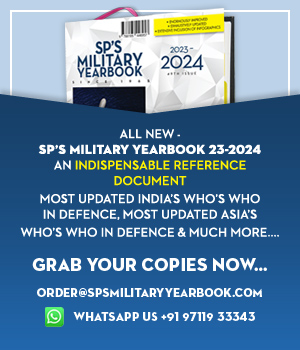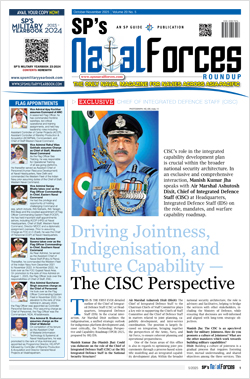INDIAN ARMED FORCES CHIEFS ON OUR RELENTLESS AND FOCUSED PUBLISHING EFFORTS
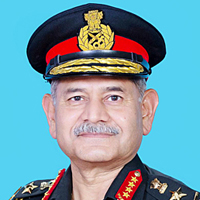
The insightful articles, inspiring narrations and analytical perspectives presented by the Editorial Team, establish an alluring connect with the reader. My compliments and best wishes to SP Guide Publications.
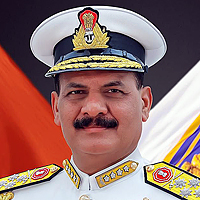
"Over the past 60 years, the growth of SP Guide Publications has mirrored the rising stature of Indian Navy. Its well-researched and informative magazines on Defence and Aerospace sector have served to shape an educated opinion of our military personnel, policy makers and the public alike. I wish SP's Publication team continued success, fair winds and following seas in all future endeavour!"

Since, its inception in 1964, SP Guide Publications has consistently demonstrated commitment to high-quality journalism in the aerospace and defence sectors, earning a well-deserved reputation as Asia's largest media house in this domain. I wish SP Guide Publications continued success in its pursuit of excellence.
- Global Partners Urged to Tap India's Shipbuilding Potential: Rajnath Singh at Samudra Utkarsh
- All about HAMMER Smart Precision Guided Weapon in India — “BEL-Safran Collaboration”
- India, Germany deepen defence ties as High Defence Committee charts ambitious plan
- G20 Summit: A Sign of Global Fracture
- True strategic autonomy will come only when our code is as indigenous as our hardware: Rajnath Singh
- India–Israel Joint Working Group Meeting on defence cooperation to boost technology sharing and co-development
Coast Guard Sea Hunter Aircraft Bid to Kick Off
By SP's Special Correspondent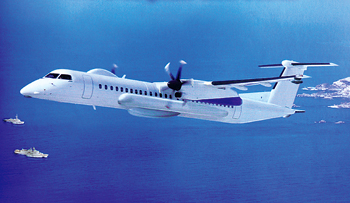
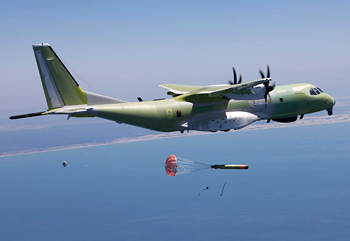
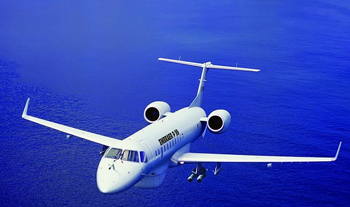
SP’s can confirm that discussions have taken place between ICG officials and representatives of aircraft companies in first week February ahead of Defexpo, though the formal tender process will begin only towards the middle of this year. CABS will be lead integrator: It has floated tenders for the platform’s intended maritime patrol radar and electro-optic system/infrared (EO/IR) suite, in addition to a pollution surveillance suite. The stated roles for the proposed airborne platform include maritime surveillance and interdiction, search and rescue, cargo and personnel transportation, air ambulance and pollution surveillance.
The Indian Coast Guard desperately needs an equipment overhaul, especially in the maritime domain awareness area. The force currently depends on a fleet of Dornier Do-228 maritime surveillance aircraft for the job. A senior ICG officer at Defexpo told SP’s, “As of now, as the Raksha Mantri said, there is little money to spend on capital acquisitions. But the scenario will change with the next fiscal. The ICG is planning ahead so that there are no unforeseen delays of any kind. Revamping our aviation wing is a priority area for the ICG Director General, and will be pursued with determination. Apart from multi-mission fixed-wing aircraft, the ICG also requires shore-based and ship-based multi-role helicopters. These processes are in various stages.”
The MMMA request for information is an unusually detailed document going into the minutae of missions and technical configuration of aircraft, sensors, electronic systems and maintenance. The ICG, which has consulted with the Indian Navy on the programme, will likely base the aircraft in Gujarat and Andhra Pradesh, though this is yet to be decided officially.
As is well known, CABS is currently flight testing the DRDO-Embraer AEW&C aircraft in country, suggesting that the Brazilian airframer may have a type advantage, though the ICG has said that a fresh bid will involve a fair and open competition between interested companies. Companies likely to evince interest in the programme include Boeing, Lockheed Martin, Alenia Aeronautica, Airbus Defence, Dassault Aviation, Bombardier, Gulfstream, Beechcraft and Saab. A degree of commonality with the Indian Navy MRMR programme is obvious, though at this stage, both competitions are distinct.
Speaking recently, ICG Director General Vice Admiral Anurag Thapliyal said, “The addition of 29 surface platforms (one each pollution control vessel and offshore patrol vessel, 12 fast patrol vessels, eight air cushion vessels and seven interceptor boats) and supporting shore infrastructure which includes a Regional Headquarter (North-East) at Kolkata and District Headquarters-14 at Port Blair in the recent past is an earnest effort by this growing service to ensure presence all along the 7,500-km-long Indian coastline and render swift response to emergency contingencies at sea. We expect to add another 15-20 vessels this year. Today, the Indian Coast Guard has an organisational structure comprising five Regional Headquarters, 14 District Headquarters, 41 Stations and 9 Air Stations/Enclaves with suitably equipped surface and air units dispersed along these stations on 24 x 7 days task of surveillance round the year.”




